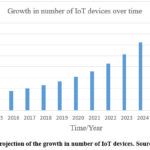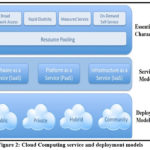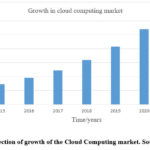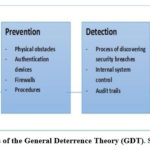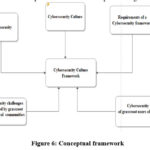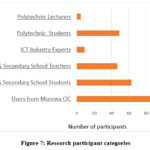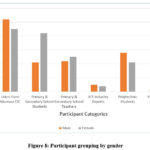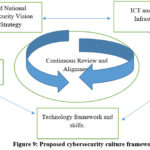Introduction
Background
Cybersecurity is a combination of
technologies, processes and operations that are designed to protect information
systems, computers, devices, programs, data and networks from internal or
external threats, harm, damage, attacks or unauthorized access 2
.The essence of cybersecurity is to consolidate the confidentiality, integrity,
and availability of computing resources, networks, software programs, and data
into a coherent collection of policies, technologies, processes, and techniques
for the prevention of the occurrence of cyber-attacks 3. The key
cybersecurity applications are the detection of intrusion and malware. The Network Intrusion Detection Systems (NIDS) distinguishes between malicious
users and the legitimate network users with a view to ascertain anomalous
violation of security policies 4. NIDS are categorized into two
taxonomies, anomaly detectors and misuse network detectors. According to Bloice and
Holzinger 5, the components in Intrusion Detection and Prevention
Systems (IDPSs) can be sensors or agents, servers, and consoles for network
management. Hackers are now able to devise innovative ways of breaking into
network systems secured by firewall, encryption, antivirus software, secure
protocols, etc.
The
attitudes, assumptions, behaviour, beliefs, values and knowledge exhibited by
people during their interaction with the information assets is what constitutes
the cybersecurity culture 6. According to Malyuk and Miloslavskaya
7 and United Nations 8, the solution of emerging cyber
security challenges will not be rectified by government or law enforcement
bodies alone but in conjunction with society. A strong cybersecurity culture influences the security behaviour and mindsets of people, and will stand as a human firewall against threats without
coercion 9 . Currently, there is a general lack of knowledge and information
on cybersecurity matters in Africa 8. The establishment of a
cybersecurity culture is an essential approach to cybersecurity 10. Cybersecurity legal
frameworks to fight cybercrime are still being developed and in their infancy. Twenty-one countries in Africa have
Data Protection Legislations of
which 13 have both Data and Cyber Security Legislation. Zimbabwe is one of the African countries that
has a provision for a Data Protection Authority together with the Cape Verde,
Equatorial Guinea, Ghana, Lesotho, Malawi, Mauritius and South Africa. By April
2016, 11 countries notably, Botswana, Cameroon, Côte d’Ivoire, Ghana,
Mauritania, Mauritius, Nigeria, Senegal, Tanzania, Uganda and Zambia seemed to
have basic substantive and procedural law provisions in place. Substantive and
procedural law provisions are partially in place in only 12 African countries namely
Algeria, Benin, Gambia, Kenya, Madagascar, Morocco, Mozambique, Rwanda, South
Africa, Sudan, Tunisia and Zimbabwe. Sadly, the majority of African countries
are still yet to put in place in full force specific legal provisions on
electronic evidence and cybercrime.
Statement of the Problem
The greatest risk of cyber-attacks has increased
phenomenally due to the astronomical increase in internet-connected systems 3.
The gross limitations of firewall protection against external threats have
proved their inadequacy. The rapid
development of computing and digital technologies has necessitated the need to
revamp cyber defense strategies for most organizations. Consequently, there is
an imperative for security network administrators to be more flexible,
adaptable, and provide robust cyber defense systems in real-time detection of
cyber threats. Progress in the ICT industry in Zimbabwe is hampered by the lack of a framework which provides direction,
focus, guidance and a standardised way of addressing cybersecurity. As an integral part of the development
into information societies, the
protection of valuable information, infrastructure and individuals from
cyber-attacks has become of primordial importance in countries like
Zimbabwe. What is required under the circumstances
to prevent cyber-attacks in Zimbabwe is a cybersecurity culture framework.
Purpose of study
The research was purposed to develop a cybersecurity culture framework which ensures that grassroot users of cyberspace are secured from cyber threats.
Research objectives
The research objectives were to:
Ascertain the cybersecurity challenges being faced in Zimbabwe
Investigate cybersecurity needs of grassroot users of cyberspace in Zimbabwe
Develop a cybersecurity culture framework for grassroots users of cyberspace in Zimbabwe
Research Questions
The main
research question was:
How is a cybersecurity culture framework developed to thwart the cybersecurity risks for the grassroot users of cyberspace in Zimbabwe?
The sub questions were:
What are the cybersecurity challenges being faced in Zimbabwe?
How can the cybersecurity needs of grassroot users of cyberspace in Zimbabwe be met?
How can a cybersecurity culture framework be developed for grassroot users of cyberspace in Zimbabwe?
Literature Review
Internet of Things (IoT)
The era
of the Internet of Things (IoT) generates huge volumes of data collected from
various heteregenous sources which may include mobile devices, sensors and
social media. The Internet of Things (IoT) involves the interconnection among
the interconnected devices. The transmission method can be wired or wireless
depending on the devices 11. The exponential rise of the IoT support
the fact that cyberspace is growing at an exponential rate and will continue to
grow with no sign of slowing down. Secure consumption of cyberspace is
contingent upon the cultivation of a cybersecurity culture 12.
Hackers are now targeting the Internet of Things (IoT) 13. Due to the advances in IoT, the technological integration and collaboration is envisaged to increase in complexity which precipitates cybersecurity risk 14. Interconnectivity of people, devices and organizations in this digital era unveils access points where cyber criminals can get in. The cloud also presents a good chance for Internet of Things to flourish but security is always an issue. The use of the internet via smartphones and tablets has presented accessibility of organizations’ data anywhere anytime. The number of Internet of Things (IoT) devices is increasing phenomenally as we use these IoT devices daily on the network 15.The Internet of Things (IoT) industry was projected in 2015 to grow to a worthiness of $US19 trillion by 2020 globally 16. Figure 1 below shows an upward growth trend in the number of Internet of Things (IoT) from the year 2015 to 2025. According to SANS 17, the number of Internet of Things (IoT) devices is anticipated to quintuple within a period of 10years from 2015 to 2020.
The growth in Big Data and Cloud Computing industries also presents great chances for the Internet of Things (IoT) industry to flourish. However, cybersecurity risk continues to be a key challenge with the advent of IoT. Hackers are likely to penetrate an organization’s network through the IoT devices 18 or through the cloud environment which the Internet of Things (IoT) devices heavily rely on 19. The cybersecurity risk of IoT devices together with the users is high and its importance is of great significance 15 .
Advances in Cloud Computing
Cloud computing entails the provision of internet services through a hired software operating on a hired hardware provided through someone else’s data center 20 . Cloud Computing is the provision of computing as an on-demand, pay-as-you-go service availed in the form of virtualized distributed processing, storage, and software resources and a service. The NIST Cloud computing framework states that cloud computing is made up of five essential characteristics, three service models and four deployment models 21 , as shown on Figure 2. The five (5) essential characteristics of Cloud Computing are briefly explained follows:
On-demand self-service
A consumer can unilaterally provision computing capabilities such as server time and network storage as needed automatically, without requiring human interaction with a service provider.
Broad network access
Heterogeneous client platforms available over the network come with numerous capabilities that enable provision of network access.
Resource pooling
Computing resources are pooled together in a multi-tenant model depending on the consumer demand in a location independent manner.
Rapid elasticity
This is the rapid and elastic provisioning or purchase of unlimited capabilities to quickly scale out; and rapidly released to quickly scale in.
Measured service
Cloud computing systems can be automatically controlled and optimized with a transparent metering capability at some level of abstraction appropriate to the type of service.
Cloud computing has many benefits for the organizations and these include cost savings, scalability, anytime anywhere access, use of latest software versions, energy saving and quick rollout of business solutions. The general benefits of cloud computing according to Gerke 22 and Murugan and Rajan 23 include:
free capital expenditure
accessibility from anywhere at anytime
no maintenance headaches
improved control over documents as files will be centrally managed
dynamically scalable
device independent
instant (Cost-efficient and Task-Centrism)
private server cost
The cloud computing market was projected by KPMG 19 to
grow 4 times between 2015 and 2020 as depicted Figure 3 above with the
associated business growth rising from US73 billion to US270 billion,
respectively. The situation is exacerbated by cybercriminals who use the cloud
services as warehouses to store their malicious software and as launchpads for
Denial of Service (DOS) attacks 18.
National Institute of Standards and Technology (NIST) Cybersecurity Framework
According to National Institute of Standards and Technology 24, the NIST Cybersecurity framework was developed with the sole purpose to curb cyber risk and improve security to the critical infrastructure. The NIST Cybersecurity framework is premised on Control Objectives for Information and Related Technologies (COBIT), International Organization for Standardization (ISO) and International Electrotechnical Commission (IEC). Since different organizations face different cybersecurity risks, this framework is not a one size fits all framework. The framework comprises the framework core, implementation tiers and the framework profile. The five sub-components of the NIST framework are shown below on Figure 4.
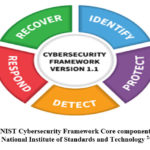 |
Figure 4: NIST Cybersecurity Framework Core components. Source: National Institute of Standards and Technology 24
Click here to View figure
|
The framework core comprises a set of cybersecurity activities, references and desired outcomes applicable and common across all sectors. According to Alcaraz and Zeadally 25, critical infrastructure is made up of assets and systems which can be either virtual or physical that are of great importance to a nation1.
General deterrence theory (GDT)
The General Deterrence Theory posits that the use of counter means such as strong deterrents and penalties can dissuade the occurrence of cyber-attacks and other crooked self-centered activities 26. In order to eliminate the threats and mitigate against cyber risks, counter measures can be adopted that include training and education, backups and disaster recovery. With deterrence activities, activities that counteract criminal abuse of cyberspace can be embarked on 27. The main components of the General Deterrence Theory are Deterrence, Prevention, Detection and Remedy as illustrated in Figure 5 below 27.
The General Deterrence Theory unpacks the risk management approach
to cybersecurity which provides a technical blueprint that ensures that
grassroot users of cyberspace are shielded against cyber-attacks.
Game Theory
Game
theory presents multi-person decision scenarios
as games where each player opts for actions that result in the best possible rewards for
self. A game presents a narrative of the strategic reciprocal actions between
opponents but with no specific actions taken 28. The dispute between the cyber attackers and the cyber victims with regards to decision
strategies is adequately handled by Game theory. In this research this theory helped in the provision of the
strategic direction in the allocation of resources and the technical measures
for the dynamic cybersecurity ecosystem.
Developing countries are facing the following cybersecurity
challenges:
Infrastructure 10
Legal frameworks 29
Harmonization of legislation 30
Balancing harmonization and country specific needs 31
Systems 32
Education and awareness 32
Cybersecurity knowledge 8
Affordability and funding 33
Perceived low susceptibility to attacks 34Lack of adequate frameworks that speak to their cybersecurity needs 34
Reporting cybercrime 35
Data sharing 8
Cryptography
Data
is valuable and needs to be protected. There is need to protect data from
unauthorised personal within an organisation, or from external parties with
malicious intentions. Encryption
or cryptography preserves electronic
data in protected formats that restrict access only to the intended users. This method of protecting data is
defined as follows:
‘The art of protecting information by
transforming it (encrypting it) into an unreadable format, called cipher text.
Only those who possess a secret key can decipher (or decrypt) the message into
plain text. … Cryptography is
used to protect e-mail messages, credit card information, and corporate data.’ 36
Cryptographic algorithms can be categorised based on their use or on the number of keys used for encryption and decryption. The three common types are the Secret Key Cryptography (SKC) ,Public Key Cryptography (PKC) and Hash Functions37.
Significance of Cryptography
The central focus of cryptography in computer technology is on are Authentication, Integrity and Confidentiality.
Authenticationrefers to correctly identifying a user of a system before they are granted access, Authentication is the process by which a user establishes his identity to a system or application 37. Hitachi categorises authentication into three forms 38:
Something the user knows, i.e., a secret, such as a password, PIN or the answer to a security question.
Something the user has, such as a one-time password token, smart card or mobile phone.
Something the user is, meaning a biometric measurement of the user — his voice print, finger print, vein pattern scan, iris or retina scan or some behaviour, such as his typing cadence
Integrity, in the context of computer systems, refers to methods of ensuring that data is real, accurate and safeguarded from unauthorized user modification 39. This gives users confidence that they are dealing with authentic system developers or owners.
Confidentiality means that ‘you can keep your information secret especially when you send sensitive data over a network’ 40. Cryptography addresses the quest for preserving your online transactions, personal data, or any other secret information.
Applications
of Cryptography
Cryptography is applied in many areas of computer technology including the use of cryptography in the creation of virtual money, called crypto-currency. Crypto-currency has a very high to keep this money secure on the various platforms. The types of crypto-currency that exist so far are Bitcoin, EOS, Cardano (ADA), NEO, Monero (XMR), DASH, Zcash (ZEC), Ripple (XRP), Ether and Litecoin (LTC) as list by 41.
Other applications for cryptography are
Protecting stored files, e.g. ‘in the Encrypting File System that is integrated into Microsoft Windows, the user’s private key is decrypted by the operating system when the user logs in’ 42.
Virtual private networks (VPN) are a way of creating an encrypted connection between a remote user and a site 43.
Secure web browsing is required particularly when users visit sites that facilitate financial transactions or communication that must be confidential.
Secure messaging is a requirement for most social media platforms, such as Skype, WhatsApp, GoogleTalk and Facebook Messenger.
Protecting Confidentiality in Cloud or Third-Party Computing.
Conceptual Framework
A conceptual framework helps the researcher in the identification and crafting of his/her worldview on the phenomenon under investigation 44 and reflects the thoughts around the entire research process 44. It can be viewed as a researcher’s idea on how to explore the research problem. It is hinged on the concepts which are the key variables in a study and is specific and it narrows down to ideas that are used by the researcher 46. It helps in the clarification of concepts and in the proposition of relationships among concepts in a study 47. In this research, the researchers used the conceptual framework that is depicted in Figure 6 below.
In order to come up with a cybersecurity culture framework, the researchers took into account the following factors:
Cybersecurity
Cybersecurity culture
Requirements of a cybersecurity framework
Cybersecurity challenges being faced faced by grassroot users of cyberspace
Cybersecurity needs of grassroot users of cyberspace
Research Methodology
A research paradigm is way
of thinking philosophically or a world view that enlightens the meaning or
interpretation of research data 48. It also gives a reflection of
the researcher’s opinions or beliefs about the world that s/he exists in or
want to exist in. The research
paradigm is a conceptual lens through which the researcher scans the
methodological facets of their research to decide on the research methods that
will be used and how the data will be analysed 48.
Epistemology has a main focus on the theory of knowledge49. Epistemology helps the researcher in the establishment of the faith that s/he puts in his/her data 48. Ontology as a division of philosophy deals with the assumptions that are put in place in order to believe that something is real or makes sense. Scott and Usher 50 as cited by Kivunja and Kuyini 48 add that an ontology provides an understanding of the things that constitute the world as it is known. A methodology is an umbrella term used to cover research methods, research design and procedures used in a planned investigation to find out something. Axiology refers to the ethical issues worthy of consideration when doing research 48.
The research used the Interpretivist Paradigm, whose components are shown on Table 1 below and the justification given.
Table 1: Interpretivist paradigm components and explanation
|
Paradigm component
|
Explanation
|
|
Subjectivist epistemology
|
Researcher uses his/her own thinking and cognition to derive meaning from the research findings arrived at through interactive processes with the respondents
|
|
Relativist ontology
|
Multiple realities exist in the given setting
Meaning is derived from the realities through interactions between the researcher and subjects as well as among participants
|
|
Naturalist methodology
|
Researcher makes use of data collected through text messages, interviews, conversations and reflective sessions as a participant observer
|
|
Balanced axiology
|
Research outcome will reflect the researcher’s values, reporting research findings in a balanced manner
|
According
to Mohajan 51, research methodology can also be viewed as a
procedural or step by step outline or framework within which research is done. In this research, a qualitative
research methodology was used in order to fulfil the objectives of this study. The Interpretivist
paradigm guided the
choice of the qualitative research methodology that sought to understand the
thought process of respondents in a certain context and generate new concepts
or theories. This study was
purposed to develop a cybersecurity culture framework to cushions grassroot users from cyber risks. The
framework that this research sought to come up with had to be informed by
grassroot users of cyberspace hence the contextual nature of this research
demanded a qualitative methodology as underpinned by the interpretivist philosophy.
The research
sought to
dig deep and bring fourth the complicated cybersecurity aspects within a rural
setting and a case study is the best approach. A case
study was done for a rural community in Murewa
District in Mashonaland East in Zimbabwe. Depending on the nature of
the research objectives, research designs can be combined in a single study 49. In
this research a descriptive research design was used to answer the research questions. According to Kothari 52 and Nassaji 53, descriptive design is a study designed
to describe the participants and the phenomenon to be studied in an exact way. Other data collection methods used include interviews,
questionnaires and visual records 49. The ‘what’ nature of the objectives
could only be addressed through a descriptive research design which sought to
find out answers as things happened in a natural setup hence the use of the
descriptive research design in this research.
Research
methods are the techniques or procedures or methods used to conduct
research 49,52. According to Kothari 52, these research methods
fall the
categories that include data
collection methods; statistical techniques used in the establishment of relationships
between variables; and methods to evaluate accuracy of research findings. Research
methods are a part of the research methodology 52. Data was collected
from the respondents namely through interviews, observations, questionnaires
and focus groups.
In this research, unstructured interviews were done in order to ascertain the cybersecurity needs as well as the challenges that grassroot users of cyberspace face. There was great need for preparation of questions based on the different age groups of respondents, hence the need for flexibility in wording and the way issues were clarified to them. In order to counteract weaknesses in the questionnaire, interviews were also used. Furthermore, the observation technique was used so as to achieve the following:
double-check information provided by respondents through other means such as interviews and questionnaires and compare it with that which will be observed and note consistencies and inconsistencies
get fresh insights or even discover new things that respondents may not wish to reveal in interviews or will not think of mentioning because they think they are not relevant
get an understanding of the challenges and needs of the grassroot users of cyberspace as they actually use their internet devices.
Questionnaires were
used to support interview obtained data to widen the scope of data collection.
Both close ended and open ended questions were used. These questionnaires were made to be interactive and written in clear and
simple English so that respondents could understand and respond accordingly.
Murewa district in the Mashonaland East Province of Zimbabwe was chosen for this study. The target population comprised of teachers, pupils and parents or guardians who stay in the rural areas of Murewa.A sample size is the number of respondents from which the researcher gets the required information 54. In this research, non-probability sampling techniques were used. Triangulation was used in this research in order to ensure validity and reliability of findings so as to build a complete picture from the research findings. This was achieved by analysing data collected through interviews, questionnaires and observations and themes were built.
Results and Analysis
A total of 270 respondents participated in this research from which a total of 31 interviews were conducted and 239 questionnaires were answered. Table 2 below shows the response rates obtained from the study.
Table 2: Response rate from survey
|
Research Instrument
|
Distribution
|
Response
|
Response rate
|
|
Interviews
|
45
|
31
|
68.89 %
|
|
Questionnaires
|
302
|
239
|
79.13 %
|
|
Total
|
347
|
270
|
77.81 %
|
The composition of respondents that took part in the research is shown on Figure 7.
A total 270 participants took part in the research. There were more female primary and secondary school student participants than males due to the fact that there is normally more female enrolments than their male counterparts. More male polytechnic students participated in the research than their female counterparts because generally more males tend to take up science related courses. The participants grouping by gender is shown on Figure 8.
The findings from this research were summarised according to the
themes from the research objectives.
Cybersecurity challenges being faced by grassroot users of cyberspace in Zimbabwe
A detailed summary of the cybersecurity challenges being faced by
grassroot users of cyberspace is given below:
Poor and unreliable internet connectivity
Internet connectivity was found to be one of the biggest
challenges being faced by respondents. It affected the surfing of the internet
for purposes of doing research as well as online
Identity theft
Respondents indicated that they had their personal and credit card
details stolen through their emails by people they do not know. Some even lost
huge sums of money in the process.
Social media account hacking
Some respondents also indicated that they had their Facebook accounts hacked after they had clicked some links that popped whilst they were surfing the internet
Limited cybersecurity courses in the education curricula
Some participants from the education fraternity highlighted that the
Zimbabwean education system had limited or zero courses on cybersecurity at
primary or secondary level and yet the persons who fall in these age groups
frequently use the cyberspace and are exposed to cyber risks.
Difficulties in prosecuting cybercriminals
Participants indicated that tracking the perpetrators of
cybercrime and bringing them to book was a challenge. They felt that the police
was not well equipped and knowledgeable enough to handle cybersecurity cases
and victims.
Exposure to pornography
Participants also revealed that unnecessary pop ups of pornographic disturbed smooth internet surfing and lured the users into visiting more pornographic websites.
Limited research on cybersecurity
Respondents also pointed
out that research in cybersecurity is still in its infancy in Zimbabwe and to
some extent this is attributed to lack of proper ICT equipment that
necessitates a practical cybersecurity research approach.
Cybersecurity skills gap
A cybersecurity skills gap in Zimbabwe was also identified as one
of the biggest challenges as there is only a few people pursuing information
security or cybersecurity as a course or career. Brain drain was also
identified a major contributing factor to this cybersecurity skills gap.
Fake news
Fake news was also highlighted as a challenge as it was causing unnecessary panic, destruction of property, marriage breakdowns as well as defamation of character amongst citizens.
Lack of ministerial role clarity on cybersecurity issues
Some respondents highlighted that in Zimbabwe, there is a lack of
ministerial role clarity on cybersecurity matters.
Poor customer service from internet service providers
Participants underlined the poor customer service from internet
service providers in the event of service disruption.
No proper policies and regulations to counter cyber threats
Participants also indicated that there were no well-developed
policies and regulations to counter cyber attacks.
High internet /data charges
High cost of the internet or data was also a major hindrance in
accessing cyberspace.
Shortage of ICT teachers who can teach cybersecurity
Some school heads indicated that the biggest challenge they were
facing was that of lack of skilled ICT staff who could teach Computer Studies
and cybersecurity.
Lack of cyber security capacity building for teachers
Some rural school teachers complained of the lack of ICT and cybersecurity capacity building initiatives such as workshops and trainings to keep them abreast with the changing technology space.
Lack of supporting infrastructure
Participants
reiterated the fact that several computerization programmes had been launched
in many rural schools but had not been equally matched with electrification
initiatives such that the computers remained idle due to lack of electricity
infrastructure.
Limited understanding of ICT and cybersecurity issues
The
researcher noted that most participants were not well conversant with issues to
do with ICTs in general and cybersecurity was a big word to them.
Cybersecurity needs of grassroot users of cyberspace in Zimbabwe
The
following is a summary of the findings on the cybersecurity needs of grassroot
users of cyberspace in Zimbabwe.
Cybersecurity technical measures
Participants highlighted the need for adoption of technical measures
that are implementable in the Zimbabwean environment. These range from internet
and social media policies, backups, antiviruses, access controls as well as
other physical and logical security measures.
Cybersecurity awareness
Cybersecurity awareness programmes
were identified as an important need for grassroot users of cyberspace as they
promote thoroughness and cautiousness in the conduct of cyber activities in the
cyberspace.
Cybersecurity skills training
Respondents indicated that cybersecurity skills gaps should be addressed in order to reduce errors
that may lead to cyber breaches and compromised security.
Cybersecurity education
Participants reiterated the fact that there is need for the introduction
of mandatory cybersecurity courses at certificate, diploma and degree levels.
As for non-graduates, the courses could be introduced at primary and secondary
level.
Cybersecurity training for law enforcement agencies
Respondents pointed out that the Zimbabwean law enforcement agencies
need to be equipped through cybersecurity training and education in order to
handle cybercrime cases.
Physical security of ICT Equipment
Participants from schools revealed that strong physical security of ICT equipment was required because vandalism and theft of computers and computer accessories was quite rampant in some primary and secondary schools in Murewa.
Payment systems
Respondents pointed out that the Government of Zimbabwe should chip in
provision of a national payment system that can guarantee availability,
dependability and reliability of services of national significance at better
service charges.
Improved payment service availability
Respondents revealed
the need for online and offline transaction facilities to be made available at
all times to ensure service availability even in instances where the network is
down.
Cybersecurity legislation
Cybersecurity legislation needs to be instituted as a way of tackling some of the cybersecurity challenges being faced in Zimbabwe.
Special call centre for reporting cybercrimes
Some respondents
pointed out the need for a dedicated cybersecurity call centre where cyber
incidents could be reported and relevant assistance offered to those in need.
Cybersecurity knowledge sharing
Knowledge sharing
particularly on issues to do with cybersecurity was also identified as a need
by participants.
Requirements of a cybersecurity culture framework
This section will
summarise findings on the requirements of a cybersecurity culture framework
Shared cybersecurity vision and communication strategy
ICT experts reiterated the need for the crafting of a cybersecurity
vision supported by an effective communication strategy as a means of aligning
all the citizens to a cybersecurity strategy. The nation’s leadership has to
drive the vision and strategy through effective communication to every citizen
and everyone should be made to understand it and make them realize their
positions in the cybersecurity ecosystem.
Stakeholder engagement
Respondents highlighted the need for stakeholder involvement in coming
up with a clear cybersecurity vision and strategy that is also implementable in
the Zimbabwean grassroot environment. It should be shared by every Zimbabwean
and not only by a minority group of individuals and organizations. In that
regard, grassroot user consultations are key in coming up with cybersecurity
solutions that address their cybersecurity needs.
Cybersecurity legislation
Participants revealed that cybersecurity is central in the safety of the
public, prosperity of the economy and also the security of government. In that
regard, enactment of laws that guide the reporting of cyber breaches and how
the criminals will be dealt with is very important so as to effectively apply
the law when a crime has been committed.
Cybersecurity education and awareness
Respondents indicated that empowerment through education in
cybersecurity is an important ingredient in the making of a cybersecurity
culture framework. This will go a long way in fostering awareness and
instilling a culture of cybersecurity.
Cybersecurity research and development
Participants pointed out that research and development in
cybersecurity should be well supported and funded by the Government of Zimbabwe
so as to stimulate research in the field of cybersecurity.
Cybersecurity emergency readiness
Respondents revealed that emergency readiness is a key pillar in a
cybersecurity framework
Local and international cooperation
The need for local and international cooperation on cybersecurity issues was also unveiled by respondents as a key element of a cybersecurity framework.
Existing cybersecurity frameworks in use
The research unveiled some of the cybersecurity frameworks that are in use across the globe. These include the following:
NIST Cyber Security Framework
Italian Cyber Security Framework
International Information Systems Security Certification Consortium (ISC)2 Common Body of Knowledge (CBK)
The International Organization for Standardization (ISO) 27032:2012
Council on Cybersecurity Critical Security Controls
North American Electric Reliability Corporation (NERC) Critical Infrastructure Protection (CIP) Cybersecurity Version 5
Health Information Trust Alliance (HITRUST) Common Security Framework (CSF)
Proposed cybersecurity culture framework for grassroot users of cyberspace in Zimbabwe
A cybersecurity culture framework for grassroot users of
cyberspace was then crafted based on the research findings as shown in Figure 9 below. It is made up
of five pillars which are:
Shared National Cybersecurity Vision and Strategy
ICTs and Related Infrastructure
Cybersecurity Legislation
Education and Awareness
Technology framework and skills
These pillars should be subjected to a process of continuous review and alignment
in line with the changing technology and cyber threat landscape.
Shared National Cybersecurity Vision and Strategy
Zimbabwe has to
have a cybersecurity vision and strategy that should also cascade to the
grassroot users of cyberspace. The national cybersecurity strategy should set
clear, top- bottom direction to institute and develop cybersecurity for the
government, organizations, and citizens at large.
ICT and Related Infrastructure
ICT
and Related Infrastructure such as base stations and electricity are very
important as they help to shape the communication landscape that facilitates
access to cyberspace. Without provision of infrastructure, it is difficult to
cultivate a culture of cybersecurity due to limited access to information and rollout
of education and awareness programmes.
Cybersecurity Legislation
Cybersecurity
laws should be enacted so as to pave way for the prosecution of cybercriminals
and to prevent and deter cybercrime. These laws should be flexible and giving
room for continuous review and alignment in line with the prevailing technology
and cyber threat landscape.
Education and Awareness
The grassroot
users of cyberspace have to be educated and made aware of cyberspace, cyber
risk and cybersecurity. This education should be introduced in early stages of
schooling such as at primary school level so that the culture of cybersecurity
can be inculcated earlier.
Technology Framework and Skills
Technology
skills to administer cybersecurity technologies and impart cybersecurity skills
are extremely important. Cybersecurity controls, products and systems should be
put in place to also help in the cushioning of the people against
cyber-attacks. Cyber emergency readiness and prevention should be enacted
through the setting up of CERTs at government and sectorial levels.
Conclusion
Conclusions of the key findings
The following conclusions were drawn from the research findings:
ICT supporting infrastructure such as electricity, base stations is much required to fully support all cybersecurity efforts in Zimbabwe
Rural school teachers in Zimbabwe do not have the requisite knowledge and skills in cybersecurity to pass on to the pupils.
There is limited understanding of the dangers posed by cyberspace in most rural communities in Zimbabwe.
Cybersecurity awareness campaigns being coordinated by the Ministry Of ICT, Postal and Courier Services are bearing fruit in rural communities in Zimbabwe. However, more support from the private sector players is required to sustain the momentum.
The Zimbabwean education curriculum falls short in offering cybersecurity courses that foster awareness and secure habits of using cyberspace.
The law enforcement agencies in Zimbabwe are not equipped enough to handle cybersecurity cases and victims in the communities they stay.
Cooperation between Zimbabwe and other countries regionally and internationally in the fight against cybercrime is yet to gain momentum although various memoranda of understanding have been signed.
Cooperation and synergies between the Zimbabwean Government and the private sector in tackling cybersecurity challenges that confront the citizens is slowly materialising although some incentives have to be considered by Government to bring more active players on board.
There is no clarity as to the Ministry responsible for cybersecurity in Zimbabwe as some issues are handled by Ministry of Home Affairs, some by the Ministry of Defence and some by the Ministry of ICT, Postal and Courier Services
Research in cybersecurity is still in its infant stages in Zimbabwe.
Cybersecurity Emergency readiness structures such as CERTs are yet to be set up in Zimbabwe
There is zeal and interest amongst rural learners to pursue ICT related subjects but supporting infrastructure such as electricity is a major setback
Recommendations
Based on the fore going conclusions, this research proffered the following recommendations:
In order to address the electricity challenges being faced in rural schools which inhibit the teaching of computer studies, solar systems should be installed as an alternative source of energy.
The education curricula should be revisited so that it incorporates cybersecurity courses at primary and secondary school level so that ICT adoption can be matched with cyber hygiene and responsible use of cyberspace.
Government of Zimbabwe in conjunction with other players in the private sector should ensure that capacity building workshops and training in cybersecurity are conducted regularly for teachers to be aligned to current trends in technology and cybersecurity.
Government of Zimbabwe should consider tax rebates for ICT and cybersecurity equipment in order to grow the industry and also stimulate research in the field of cybersecurity.
Government of Zimbabwe should clarify the Ministry responsible for cybersecurity or even consider the setting up a new Cybersecurity Ministry solely responsible for cybersecurity or a special arm under the Ministry of ICT, Postal and Courier Services or the Ministry of Defence. A clear segregation of duties and responsibilities will pave way for meaningful structures and institutions to be put in place to address cybersecurity challenges and needs of citizens.
Cybersecurity emergency readiness in Zimbabwe should be instituted through the setting up of CERTs at Governmental, sectorial and community levels.
The cybersecurity legislation in Zimbabwe should be constantly reviewed and aligned with the changing technologies and cyber threats.
The law enforcement agencies should receive relevant cybersecurity training in order for them to be able to handle cybersecurity cases and victims in the communities they stay
Cooperation between Zimbabwe and other countries regionally and internationally in the fight against cybercrime should be prioritised since cybercrimes have no geographical boundaries
Research
Contributions
This study came up with a Cybersecurity culture framework for
grassroot users of cyberspace in Zimbabwe. It is the first research of its type
to be carried out in the context of ICT4D in Zimbabwe. Literature review showed
that in Zimbabwe, no research had attempted to come up with a cybersecurity
culture framework for grassroot users of cyberspace. This study, therefore, is
expected to stimulate debate on the new knowledge generated. However, the
pillars presented in the framework may need to be elaborated further by more
research studies.
Areas of future research
The
field of cybersecurity is still fairly new and as such presents a fertile
ground for research particularly in developing countries like Zimbabwe.
Internet adoption and usage is still growing and as such, a lot has to be done
to ensure that cybersecurity issues are also taken on board.
In that regard, the researcher feels that
more cybersecurity frameworks can also be crafted in the following areas to
cushion various users against cyber-attacks:
Cybersecurity framework for local government particularly for urban and rural municipalities in Zimbabwe.
Cybersecurity framework for the health services sector
Cybersecurity framework for Small to Medium Enterprises or the informal sector in Zimbabwe.
Conclusion
According
to the International Telecommunications Union 9, the creation of a
cybersecurity culture is an essential approach to cybersecurity. The research was purposed to develop a cybersecurity
framework that supports
a cybersecurity culture to prevent cyber-attacks in Zimbabwe. The research objectives
were to:
a)Ascertain the cybersecurity challenges being faced in Zimbabwe b)Investigate
cybersecurity needs of grassroot users of cyberspace in Zimbabwe c)Develop a
cybersecurity culture framework for grassroots users of cyberspace in Zimbabwe. The researchers used the conceptual
framework to come up with
a cybersecurity culture framework
cognisant of Cybersecurity issues, Cybersecurity culture, Requirements of a
cybersecurity framework,
Cybersecurity challenges being faced faced by
grassroot users of cyberspace,
and Cybersecurity needs of grassroot users
of cyberspace.
In this research, in order to come up with a cybersecurity framework for grassroot users of cyberspace in Zimbabwe, it was critical to study respondents in detail within their rural context in order derive concepts that will be input to the framework. In this research, a qualitative research methodology was used in order to fulfil the objectives of this study. The framework that this research came up with had to be informed by grassroot users of cyberspace hence the contextual nature of the research problem demanded a qualitative methodology as underpinned by the interpretivist philosophy. A descriptive research design was used to answer the research questions and unstructured interviews were done in order to ascertain the cybersecurity needs as well as the challenges that grassroot users of cyberspace face. The observation technique was also used so as to achieve the following:
double-check information provided by respondents through other means such as interviews and questionnaires and compare it with that which will be observed and note consistencies and inconsistencies get fresh insights or even discover new things that respondents may not wish to reveal in interviews or will not think of mentioning because they think they are not relevant.
Get an understanding of the challenges and needs of the grassroot users of cyberspace as they actually use their internet devices.
The findings from this research were summarised according to the themes from the research objectives. The key challenges to progress on Cybersecurity include limited research on cybersecurity. Respondents also pointed out that research in cybersecurity is still in its infancy in Zimbabwe and to some extent this is attributed to lack of proper ICT equipment that necessitates a practical cybersecurity research approach. There is a Cybersecurity skills gap in Zimbabwe as one of the biggest challenges as there is only a few people pursuing information security or cybersecurity as a course or career. However, specific Cybersecurity needs of grassroot users of cyberspace in Zimbabwe were identified and these include Cybersecurity education where participants reiterated the fact that there is need for the introduction of mandatory cybersecurity courses at certificate, diploma and degree levels. Other needs include Cybersecurity legislation which needs to be instituted as a way of tackling some of the cybersecurity challenges being faced in Zimbabwe. Respondents indicated that empowerment through education in cybersecurity is an important ingredient in the making of a cybersecurity culture framework. With regards to Cybersecurity research and development, participants pointed out that research and development in cybersecurity should be well supported and funded by the Government of Zimbabwe so as to stimulate research in the field of cybersecurity. A cybersecurity culture framework for grassroot users of cyberspace was then crafted based on the research findings. Zimbabwe has to have a cybersecurity vision and strategy that should also cascade to the grassroot users of cyberspace. Furthermore, the education curricula should be revisited so that it incorporates cybersecurity courses at primary and secondary school level so that ICT adoption can be matched with cyber hygiene and responsible use of cyberspace.
With regards to research
contributions, this
study came up with a Cybersecurity culture framework for grassroot users of
cyberspace in Zimbabwe. Literature review showed that in Zimbabwe, no research
had attempted to come up with a cybersecurity culture framework for grassroot
users of cyberspace.
Acknowledgement
The authors deeply appreciate the Atlantic
International University (AIU) and the Zimbabwe Open University (ZOU) for
supporting this research work for Gabriel and Tinashe, respectively.
Conflict of interest
There is no conflict of interest associated with this publication.
Funding Sources
The author(s) received no financial support for the research, authorship, and/or publication of this article.
References
- Kabanda G. Performance of Machine Learning and other Artificial Intelligence paradigms in Cybersecurity. Orient.J. Comp. Sci. and Technol; 13(1).
CrossRef - Sarker, I. H., Kayes, A. S. M., Badsha, S., Alqahtani, H., Watters, P., & Ng, A. Cybersecurity data science: an overview from machine learning perspective, 2020. Journal of Big Data. https://doi.org/10.1186/s40537-020-00318-5
CrossRef - Berman, D.S., Buczak, A.L., Chavis, J.S., and Corbett, C.L.Survey of Deep Learning Methods for Cyber Security; 2019. doi:10.3390/info10040122
CrossRef - Bringas, P.B and Santos, I. Bayesian Networks for Network Intrusion Detection, Bayesian Network, Ahmed Rebai (Ed.), ISBN: 978-953-307-124-4; 2010. InTech, Available from: http://www.intechopen.com/books/bayesian-network/bayesian-networks-for-network-intrusion-detection
- Bloice, M. andHolzinger, A. A Tutorial on Machine Learning and Data Science Tools with Python. Graz, Austria, 2018: s.n.
- Gcaza, N., Solms, R. Von, & Vuuren, J. Van. An Ontology for a National Cybersecurity Culture Environment,. In Proceedings of the Ninth International Symposium on Human Aspects of Information Security & Assurance (HAISA 2015) (1-10); 2015.
- Malyuk and Miloslavska. Cybersecurity Culture as an Element of IT Professional Training; 2015
CrossRef - United Nations .Policy Brief. Tackling the challenges of cybersecurity in Africa; 2014
- Al Hogail M. How is the ministry fostering public-private partnerships (PPPs) with local private developers?, 2015. https://oxfordbusinessgroup.com/interview/right-home-obg-talks-majed-al-hogail-ministerhousing.
- International Telecommunication Union. Global Security Report; 2008.
- Sharma R.Study of Latest Emerging Trends on Cybersecurity and its Challenges to Society, 2012. International Journal of Scientific and Engineering Research .Vol 3 Issue 6, June 2012
- Wamala, F. ITU National Cybersecurity Strategy Guide. Chemistry & Geneva, Switzerland;2011
- Symantec .Cybercrime and cybersecurity trends in Africa;2016
- Ernst and Young. Cybersecurity and the Internet of Things;2015
- Concierge. Concierge Security Report. Cybersecurity: Trends from 2017 and Predictions for 2018, 2018
- ACS .Cybersecurity: Opportunities, Threats and Challenges;2016
- SANS Cybersecurity Threat Landscape Survey;2017
- McAfee Labs Threats Report;2018
- KPMG .Clarity on Cybersecurity. Driving growth with confidence;2018
- Cox, R. & Wang, G. Predicting the US bank failure: A discriminant analysis. Economic Analysis and Policy, Issue 44.2, pp. 201-211;2014
CrossRef - Yang, C., Yu, M., Hu, F., Jiang, Y., & Li, Y. Utilizing Cloud Computing to address big geospatial data challenges. Computers, Environment and Urban Systems;2017 https://doi.org/10.1016/j. compenvurbsys. 2016.10.010
CrossRef - Gercke, M. Cybercrime Understanding Cybercrime, Understanding cybercrime: phenomena, challenges and legal response;2012
CrossRef - Murugan, S., and Rajan, M.S. Detecting Anomaly IDS in Network using Bayesian Network,2014. IOSR Journal of Computer Engineering (IOSR-JCE), e-ISSN: 2278-0661, p- ISSN: 2278-8727, Volume 16, Issue 1, Ver. III (Jan. 2014), PP 01-07;2014 www.iosrjournals.org
CrossRef - National Institute Of Standards and Technology. Framework for Improving Critical Infrastructure Cybersecurity Version 1.1;2018
CrossRef - Alkaraz C. and Zeadally S. Critical Infrastructure Protection: Requirements and Challenges for the 21st Century. Journal of Critical Infrastructure Protection (IJCIP), volume 8, Elsevier Science, pp. 53-66, 01/2015;2015
CrossRef - Schuessler J.H .General Deterrence Theory: Assessing Information Systems Security Effectiveness In Large Versus Small Businesses,2009.Accessible on:https://digital.library.unt.edu/ark:/67531/metadc9829/m2/1/high_res_d/dissertation.pdf
- Alanezi, M. A., Kamil, A., & Basri, S. A proposed instrument dimensions for e-government service quality, 2010. International Journal of u-and e-Service, 3(4), 1–18.
- Chukwudi A.E, Udoka E, Charles I. Game Theory Basics and Its Application in Cyber Security;2017. Advances in Wireless Communications and Networks. Vol. 3, No. 4, 2017, pp. 45-49. doi: 10.11648/j.awcn.20170304.13
CrossRef - Norwegian Institute of International Affairs, 2018
- Bande .Legislating against Cyber Crime in Southern African Development Community: Balancing International Standards with Country-Specific Specificities, 2018. International Journal of Cyber Criminology Volume 12 Issue 1 January-June 2018
- ITU . Measuring the Information Society 2012;2012
- Schia N.N. The cyber frontier and digital pitfalls in the Global South, 2018. Third World Quarterly, 39(5): 821-837.
CrossRef - Muller P.L. Cybersecurity Capacity Building in Developing Countries. Opportunities and Challenges, 2015.
- Kortjan, N. & Von Solms, R. A conceptual framework for cybersecurity awareness and education in SA, 2014. South African Computer Journal, 52, 29-41., 2014(52), pp.29–41.
CrossRef - The Republic of Mauritius Cybercrime Strategy 2017-2019,2017
- https://www.webopedia.com/TERM/C/cryptography.html
- https://www.garykessler.net/library/crypto.html
- https://hitachi-id.com/resource/iam-concepts/authentication.html):
- https://www.techopedia.com/definition/10284/integrity).
- https://www.eukhost.com/blog/webhosting/importance-of-cryptography-in-degital-world/
- https://www.investopedia.com/tech/most-important-cryptocurrencies-other-than-bitcoin/
- https://www.nap.edu/read/25010/chapter/4#20
- https://www.nap.edu/read/25010/chapter/4#22).
- Grant C and Osanloo A. Understanding, Selecting and Integrating a Theoretical Framework in Dissertation Research. Creating the Blueprint for House;2014 . Administrative Issues Journal. Connecting Education, Practise and Research .pp 12-24
CrossRef - Ravitch, S. M. & Carl, N. M. Qualitative Research: Bridging the Conceptual, Theoretical and Methodological. Los Angeles, U.S.A.: SAGE Publications, Inc;2016
- Adom, D., Joe, A.-A., & Hussein, E. K. Theoretical and Conceptual Framework: Mandatory Ingredients of Quality Research, 2018. International Journal of Scientific Research, 7, 438-441.
- Akintoye, A. Developing Theoretical and Conceptual Frameworks;2015
- Kivunja C and Kuyini B. Understanding and Applying Research Paradigms in Educational Contexts, 2017. International Journal of Higher Education. Vol 6 No 5;2017
CrossRef - Walliman N.Research Methods the basics. Taylor and Francis e-Library,2011
CrossRef - Scott. D. & Usher, R. Researching education: Data, methods, and theory in educational enquiry. New York: Continuum; 2004
- Mohajan H.K.Qualitative Research Methodology in Social Sciences and Related Subjects, 2018. Journal of Economic Development, Environment and People, 7(1): 23-48
CrossRef - Kothari, C.Research Methodology Methods and Techniques, 2nd Edition. New Age International Publishers;2004
- Nassaji H. Qualitative and descriptive research: Data type versus data analysis,2015. Language Teaching Research 2015, Vol. 19(2) 129–132
CrossRef - Kumar, R. Research Methodology: A step by step guide for beginners 3rd ed. London: Sage Publishers;2011

This work is licensed under a Creative Commons Attribution 4.0 International License.
 and Tinashe Chingoriwo2
and Tinashe Chingoriwo2